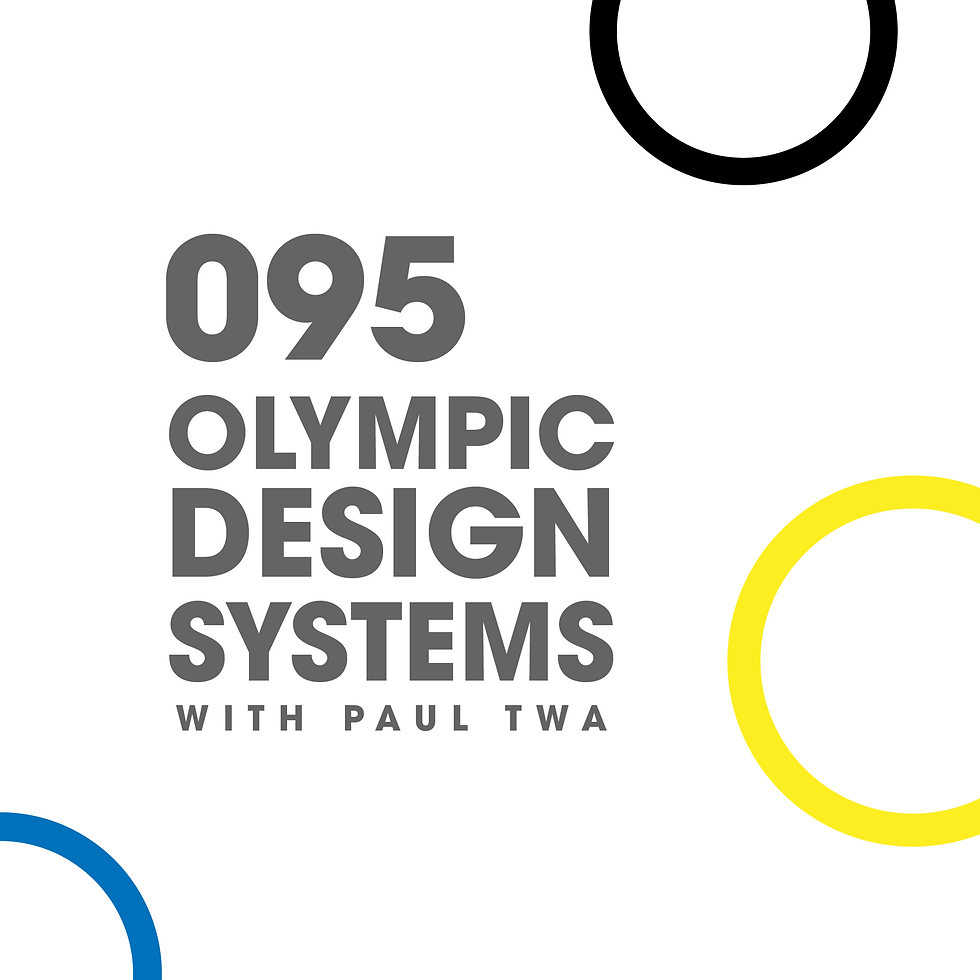095: Olympic Design Systems with Paul Twa
- Diana Varma
- Feb 18, 2022
- 4 min read
Updated: Dec 13, 2023
The 24th Winter Olympic Games are underway! Already in these Beijing 2022 games, we’ve seen acts of courage, athleticism and the coming together of nations. I recently had the opportunity to sit down with designer, illustrator and all things Olympic-lover, Paul Twa, and I’m excited to share our conversation with you.
Paul Twa is a graphic designer and illustrator based in Toronto. Born and raised in Edmonton, Paul graduated from the University of Alberta's Bachelor of Design program, Business/Marketing route. His work has been recognized nationally by the Graphic Designers of Canada, the Association of Registered Graphic Designers, and Applied Arts. With a keen interest in history, Paul enjoys studying the visual culture of the past as a way to inform the work he is making today; blending the magic of maximalism with research and intention. His annual ‘Year in Review’ project documents the memorable events of each year through illustration in a variety of historical styles and has been highlighted by the CBC and CTV.
Before Paul shares his fascinating insights and knowledge about the history of the design of the Olympic Games, allow me to provide some context in the form of zooming out to understand the bigger picture of branding as it relates to the Olympic Games.
Think of an individual brand – like the Olympic Games – as if it were a set of three nesting dolls: one large doll that contains a smaller doll inside and one more inside of it. The smallest, innermost doll is a brand’s logo; it’s most recognizable emblem. The middle doll represents a brand’s identity; all visual assets that represent the brand (virtual presence, print material, signage, wayfinding and more). Finally, the largest, outermost doll represents the brand as a whole. Broadly speaking, a brand is a reputation, a gut feeling, a culmination of all touch points any user has with an organization. It’s the words that come to mind when you think about a brand. For me, the Olympic Games, as a brand, is full of spirit, athleticism, courage, bravery, passion, teamwork and anticipation. I can't help but also think of the controversy and corruption that’s plagued the games over the years. The Olympics Games, as a brand, is all of these things and more.
Furthermore, let’s zoom back in on that innermost nesting doll (the Olympic logo) to learn about its history. The Olympic symbol (or Olympic Rings, as they’re widely known) contains 5 interconnected circles: blue, yellow, black, green and red. According to the International Olympic Committee, these circles depict the 5 continents ‘won over to the cause of Olympism’ as of 1913 when the rings were introduced. The symbol is regarded as one of the most widely known symbols in the world, designed by the founder of the modern Olympic movement, Pierre de Coubertin. It’s remained mostly unchanged since in it’s 100+ year history, having been modified ever-so-slightly throughout the years with minor adjustments in the 1920s (swapping out the blue ring for a second green ring), 1950s (a monochromatic version was introduced where each ring contained varying levels of grey and textured lines within), 1980s (minor spaces were added to intersection points between the rings to make them appear more three dimensional) and then returning to a near-identical version of the original design in 2010.
Today, in 2022, there are actually seven official versions of Olympic Rings: The classic 5 rings in 5 colours, all blue, all yellow, all black, all green, all red and a reverse white on black set of rings. The Olympic symbol is highly guarded and protected as a critical cornerstone – the critical link, if you will – to the brand identity of the Olympic Games. It is only allowed to be used in very specific ways by very specific people for very specific purposes.
I am excited to get this conversation started and to let Paul’s immense knowledge and passion for the design of the Olympic Games ignite your spirit.
Conversation Links:





About Our Guest:

Paul Twa is a graphic designer and illustrator based in Toronto. Born and raised in Edmonton, Paul graduated from the University of Alberta's Bachelor of Design program, Business/Marketing route. His work has been recognized nationally by the Graphic Designers of Canada, the Association of Registered Graphic Designers, and Applied Arts. With a keen interest in history, Paul enjoys studying the visual culture of the past as a way to inform the work he is making today; blending the magic of maximalism with research and intention. His annual ‘Year in Review’ project documents the memorable events of each year through illustration in a variety of historical styles and has been highlighted by the CBC and CTV.
Website: paultwa.com
Instagram: @paultwa
Tiktok: @paultwa
Music (public domain via Free Music Archive): Scott Holmes Music - Humanity
Talk Paper Scissors Theme Music: Retro Quirky Upbeat Funk by Lewis Sound Production via Audio Jungle
